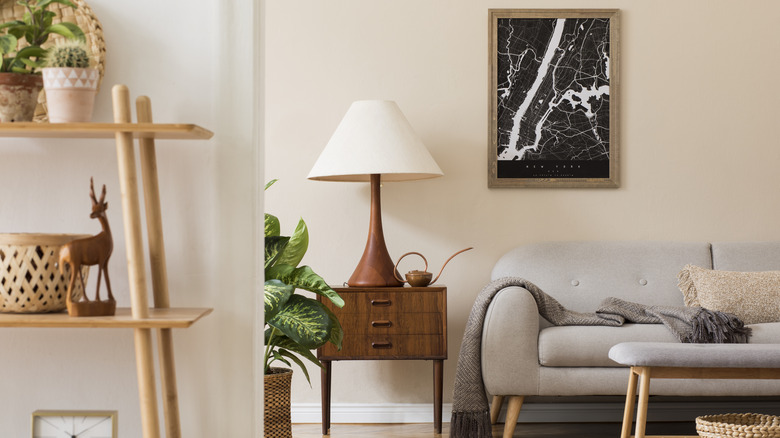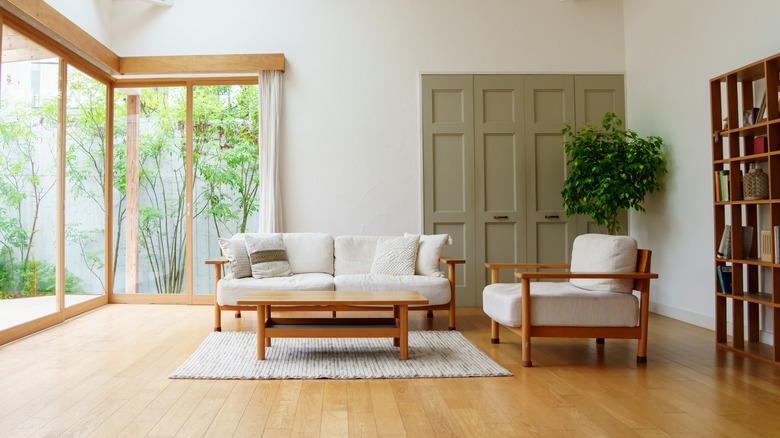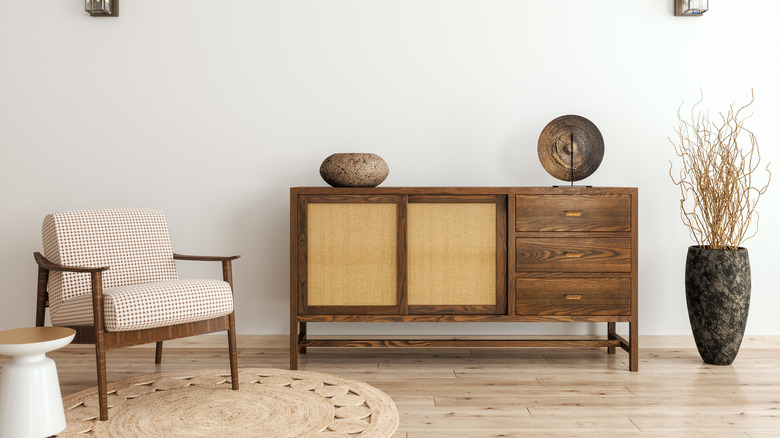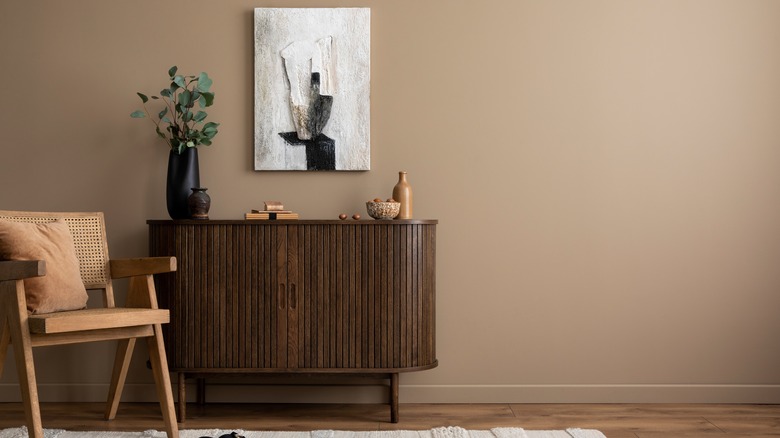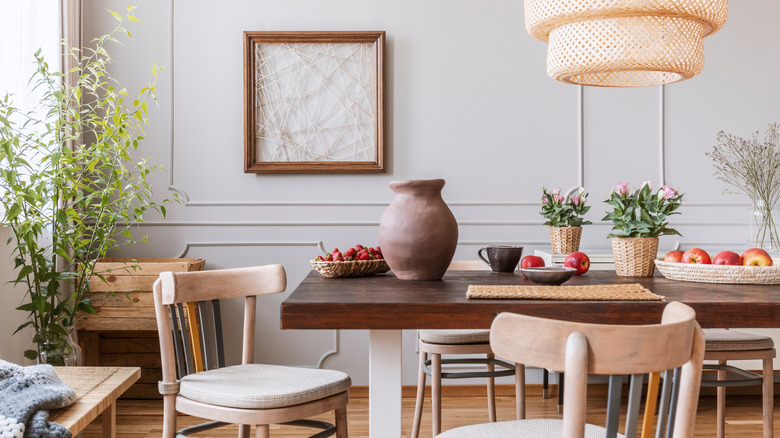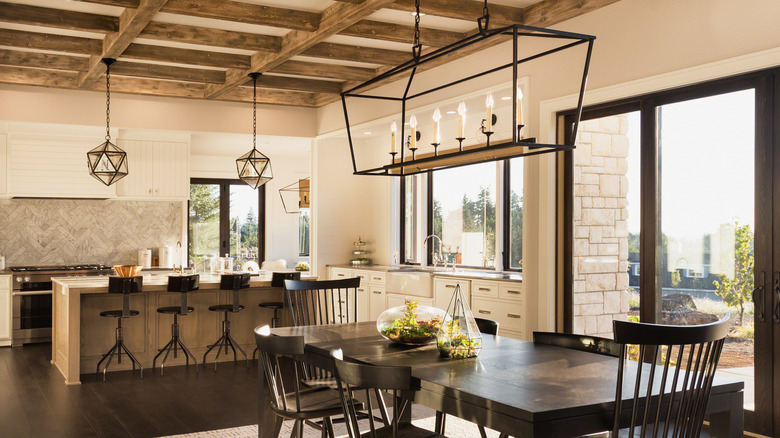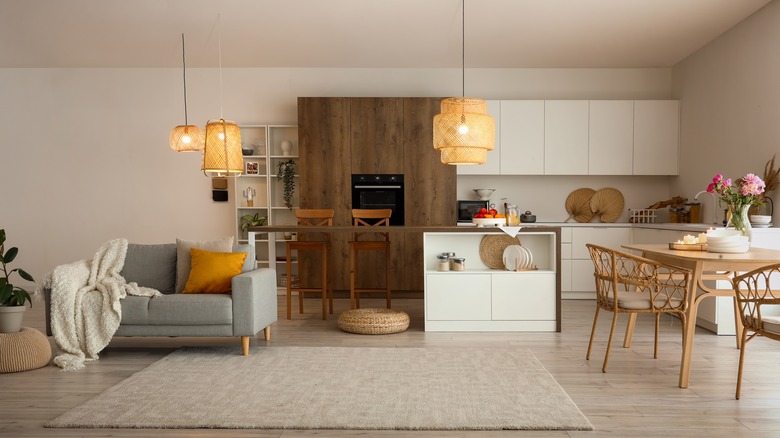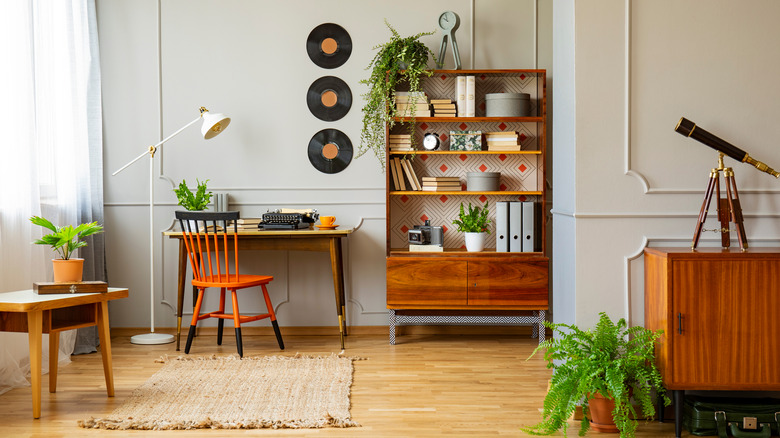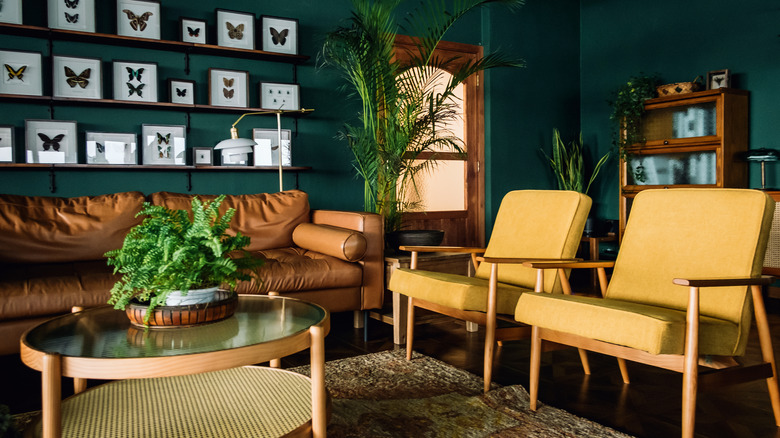11 Interior Design Tips For Styling Mixed Wood Tones—they Don't Have To Match
Whether they've planned it or not, most people have different wood tones in their homes. Maybe they've inherited a fabulous dining table from a relative in a much darker hue than the rest of their furniture, or maybe they fell in love with a specific piece that didn't exactly match their floors. If you relate, you'll be happy to hear that mixing tones is the wood furniture trend that is making a big comeback. It brings depth, interest, and contrast to interiors and is often preferred by designers over the excessive uniformity of monochromatic decor. Still, as with anything in interior design, having a room that looks layered and eclectic shouldn't come at the cost of cohesion and harmony.
To ensure all the pieces work together, there are a few guidelines you can follow. These are not hard rules, as there's no such thing in interior design, but mere suggestions that will, at the very least, make the task of mixing woods seem less intimidating. Some are intuitive, such as sticking to the same undertones or using the rest of the decor to bridge the gap between contrasting pieces. Others may not come as naturally, as in the case of repeating the same wood tone twice for a balanced whole or using the grain as a through line between different tones.
Identify the dominant wood tone
Your starting point for mixing different wood tones should be whichever tone is featured most prominently in the space. Typically, this will be the solid or engineered wood flooring, but it can also be a wall full of wood cabinetry, a beamed ceiling, or a large piece of furniture. Identifying this dominant wood tone will point you in the right direction to layer in other pieces or architectural details.
Go for contrast
You wouldn't find it off-putting to pair opposite colors on a sofa and the pillows you're adorning it with or between a kitchen countertop and the adjacent backsplash. The contrast makes both elements in the pair pop and brings movement and interest to the space. The same thing is true for contrasting wood tones. In fact, you're more likely to go wrong when pairing tones that are too similar than when daring to pair a walnut dresser with white oak floors.
Mix light, dark, and medium
If high contrast is too harsh for your taste, you can soften it by bringing in a middle ground. In fact, the light-medium-dark formula is most designers' go-to method for mixing wood tones, resulting in a layered, balanced sum that reflects a lifetime of collecting pieces. This can mean mixing different types of woods or simply different stains. Some examples of medium-tone woods include cherry and cedar.
Bring it all together through matching undertones
The reason why your wood decor looks off is most likely that you're not paying attention to its undertones. Mixing light, medium, and dark can go completely awry if you don't consider the undertones in the different pieces. In short, these can be warm, cool, and neutral. Just like colors, warm woods have red, orange, and yellow tints to them, while cool woods are white, gray, bluish, and black (usually achieved through staining). Neutrals have a bit of both, and so can work well next to either.
If mixing warm and cool, add in a bridge wood
But what if you're stuck with pieces with clashing undertones that you would rather not replace? A great way to connect them is by bringing in an architectural feature or a piece of furniture with mixed wood paneling that combines different finishes and undertones. Alternatively, some wood types naturally contain different tones, such as zebrawood, spalted sugarberry, and katalox.
Repeat the same tone a few times throughout
Once you've figured out your undertones and light-medium-dark balance, you need to decide how you're going to organize your different woods. Instinct will play a big role, but there are a few pointers that can lead you in the right direction. One of them is to repeat each tone at least twice. This will bring a sense of cohesion to the ensemble. If that seems impossible (because there's only so much furniture you can pack in a room), consider smaller objects like a lamp, a picture frame, or an end table.
Scatter the different tones across the room
Now that you've got your pairs, be careful not to place them too close together. Scattering the different wood tones across the room will add balance and flow and prevent it from looking divided. Remember the light-medium-dark formula while crafting your space, and strive for contrast when you can. If you have a dark dining table and chairs, make sure that the rest of the wood in the immediate surrounding space is in a light or medium tone.
Opt for similar grain
If the space still feels overly busy and disjointed after you've tried these suggestions, it might be because your woods have clashing grains. Different grains evoke different aesthetics and atmospheres. A coarser, larger grain — commonly found in oak and ash woods — is associated with a casual, even rustic, style. Meanwhile, a closed, smaller wood grain, like that of maple and cherry, is more understated and refined. Some appreciate the added contrast of pairing both types, but if that's taking it a step too far for you, stick to the same grain across the different tones.
Keep the floors consistent throughout the home
Going back to the very first suggestion on this list, wood floors are typically the dominant wood type and tone in the home, consequently dictating the way you integrate the rest of your wooden items. If you're already dealing with furniture in multiple tones, you don't need your floor to be adding to the visual business. Carry the same flooring from room to room for a consistent background that informs the rest of your wood-mixing efforts.
Stick to one style or era
Another simple way to minimize the chaos of mixed wood tones is to find a common thread in their design style. Sticking to pieces from the same era or in the same style can help achieve harmony in a space with mismatched woods. Similarly, it's always a good idea to look to the architecture of your property for inspiration. If you live in a historic home with plenty of original wood, invest in pieces from that specific period.
Use decor to complement the woods and create cohesion
Finally, look beyond your various wood pieces for ways to connect them. Decor, in the form of rugs, pillows, art, upholstery, wallpaper, paint colors, and accessories, holds the secret to making a room with multiple wood tones cohesive and intentional. Certain materials pair particularly well with wood, namely natural fibers like jute, rattan, and linen, as well as natural stone. Mirrors and metals, on the other hand, offset the warmth of wood for a more striking interior. Use the same color throughout your decor to bring the different wood pieces together.
